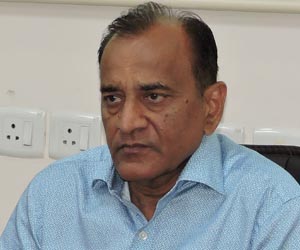If things proceed as planned, an ambitious project to understand India’s enormous genetic diversity will be launched later this year. This will arguably be the first of its kind to be initiated in the country under the aegis of the government of India. Called the Genome India Project, it could have several phases, though the fate of the subsequent phases will depend on the first one that kick starts in October. The Department of Biotechnology will be the nodal government agency overseeing this endeavour which will use cutting-edge technology in genetic science to map the Indian genome.
The Genome India Project (GIP) has a specific mandate; it is not a mere academic pursuit that aims to gather accolades in the form of national and international awards — though, if they come, they would be welcome. The exploration of the country’s rich genetic diversity is in itself an exciting exercise, but the core purpose is to use the information gathered to understand fully the nature and types of diseases that affect the Indian population, and how they can be tackled at the ‘root’. Even here, the challenges are vast in the Indian context. For instance, people of the North-East have been found to be prone to certain kinds of diseases which do not normally impact other sections of the population.
A genome is an organism’s complete set of DNA, including the genes. A gene contains all the information that serve as building blocks life. Gene sequencing has given scientists the tool to identify the genes that are critical to life, and which can be separated to understand its potential to give rise to diseases, and thereafter find genetic ways to counter the challenge.
The Genome India Project will be spearheaded by the Bengaluru-based Indian Institute of Science’s Centre for Brain Research, and involve some 20 institutions spread across the country, engaged in collecting samples, collating the information, conducting research and eventually creating a grid of the ‘Indian reference genome’. This promises to be a daunting task given the genetic variation among Indians. The data would be extremely crucial in determining the occurrence of the specific diseases and necessary interventions at the appropriate time by the health authorities. In the first phase, 10,000 genetic samples will be collected from across the country in a bid to have a ‘representative Indian genome’. Some information on India genomes is already available but they are not fully representative as they have been sourced from urban middle-class Indians and are mostly Caucasian in nature.
While the government has now decided to initiate the GIP, an exercise in decoding the entire human genome has already been conducted in some measure the world over. For instance, the Human Genome Project, which had been launched back in 1990, came to a conclusion in 2003. It was coordinated by the US Department of Energy and the National Institutes of Health. Various partners got added along the way and contributions came from countries such as Japan, France, Germany, China and others. The project involved the identification of more than 20,000 genes in the human DNA, determine the sequence of the three billion chemical base pairs that make up the human DNA, create a database of the information collected, and address the medico-legal and ethical issues that arise out of the exercise. The Indian project, therefore, is an addition to that effort with an India-centric approach, with a modest budget of Rs 238 crore.
Just how genome sequencing can be a solution to India’s problem of genetic diseases is evident from the following example of 2019. A three-month pregnant woman visited a government medical college hospital in Kerala and wanted to know if her unborn child carried a rare immune disease her first-born child was afflicted with. The doctor she consulted turned to experts at the Institute of Genomics and Integrative Biology in Delhi, managed by the Council of Scientific and Industrial Research. The scientists at the research institute used genome sequencing to determine the precise genetic abnormality of the first child and based on the information, studied the foetus of the unborn child to find out if it carried that genetic disorder. The woman was lucky; the foetus did not suffer from the rare disease — a rare disease is one that affects fewer than 100 patients per 100,000 population; if it’s fewer than two patients per 100,000, it is termed as a ultra-rare disease. But this was an individual case, and the GIP will expand the research on a national scale.
According to the website, rarediseasesindia.org, the rare diseases and disorders population in India was more than 72,000 as per the 2011 Census. The government of India has in the past undertaken a number of measures to tackle the issue, including the constitution of a Central Technical Committee for Rare Diseases, creation of a national policy to confront rare diseases, and laying down guidelines for the treatment of rare diseases. The GIP can offer valuable data which will help in better and more targeted implementation of such measures.
That said, there needs to be caution that the exercise does not go off at a tangent. For example, the GIP should not be used for discriminatory purposes — racial purity and civilisational evolution, being two of the many red-flags. There is no need to fall into the trap of determining the ‘genuine Indian’ or the ‘indigenous Indian’ and creating fissures in society. The issue of medical ethics is also critical. Recently, a doctor in China was sentenced to three years in prison after it was found that he had privately used genetic information to gene-edit babies and made them resistant to HIV. Gene-modification is, therefore, a tricky subject.
The world of genetic science is a complex one even when stated in simple terms. However, in recent years, some interesting books have been written by experts that seek to demystify genetic engineering and make the subject more palatable to the common reader. Some of these books, such as Who We Are and How We Got Here (by David Reich) and Early Indians (by Tony Joseph) primarily deal with the evolution of mankind, by going into the remarkable progress made in genetic science over the last few decades. Reich’s book is a deep history of our species and explains how ancient DNA has made us rethink our prehistory. On the other hand, Joseph’s book focuses on the advancements of genetic scene to delve into the history and evolution of early Indians — an account, in essence, of who we, Indians are.
On the other hand, genetics is the centrepiece of books such as Gene Machine: The Race to Decipher the Secrets of the Ribosome (by Nobel laureate Venki Ramakrishnan) and The Gene (by Pulitzer Prize winner Siddhartha Mukherjee). Venki’s book is an exhilarating account of the global community’s efforts to understand and unravel the complex world of ribosomes and how its understanding could lead to the development of better antibiotics and medical cure in general. The author merges his own experiences in the course of his journey into medical science with the fast-paced progress in his area of expertise. The book reads like a mystery thriller.
Mukherjee had earlier authored the much-acclaimed The Emperor of All Maladies, which took the reader into the world of research to tackle cancer. His new book is an exhaustive history of the genes and how genome engineering is seeking to push the frontiers of science. This book, as well as that of Venki, also dwell on the medico-legal and ethical issues which are so contemporary in nature.
New India’s GIP, will, hopefully, trigger further interest among Indians on the potency of cutting-edge genetic engineering and its potential to harness information to confront rare diseases — both at the preventive and later stages.
(The paper is the author’s individual scholastic articulation. The author certifies that the article/paper is original in content, unpublished and it has not been submitted for publication/web upload elsewhere, and that the facts and figures quoted are duly referenced, as needed, and are believed to be correct). (The paper does not necessarily represent the organisational stance... More >>
Image Source: https://img.etimg.com/photo/msid-70323166/1.jpg











Post new comment